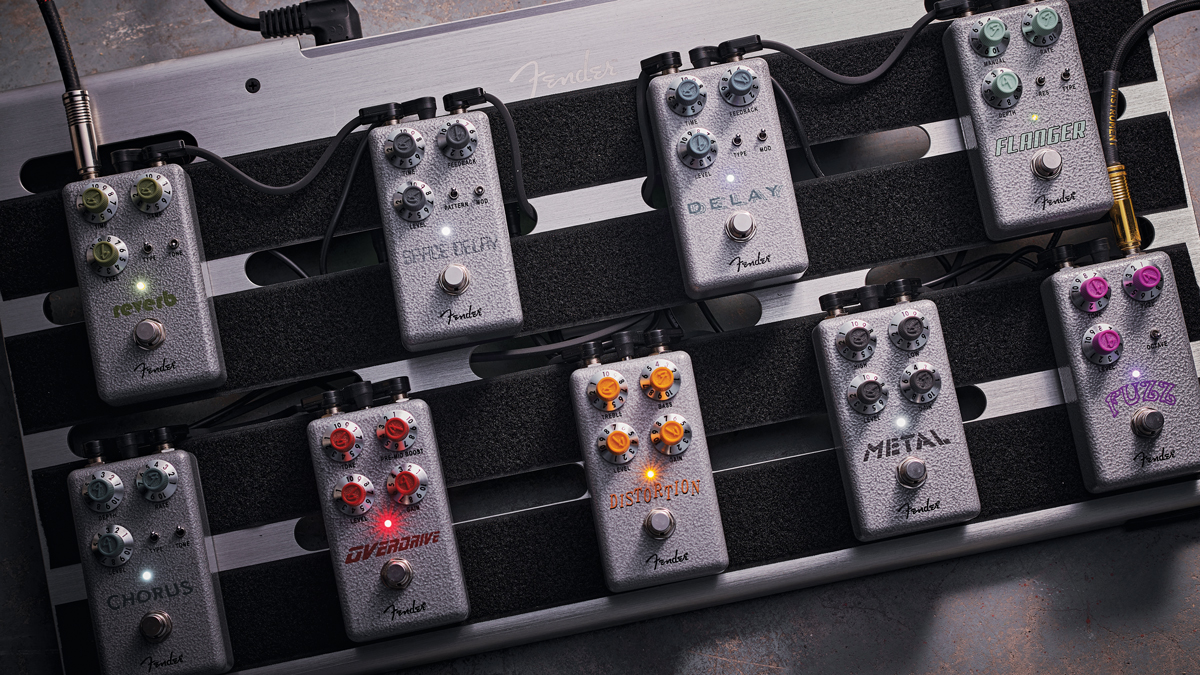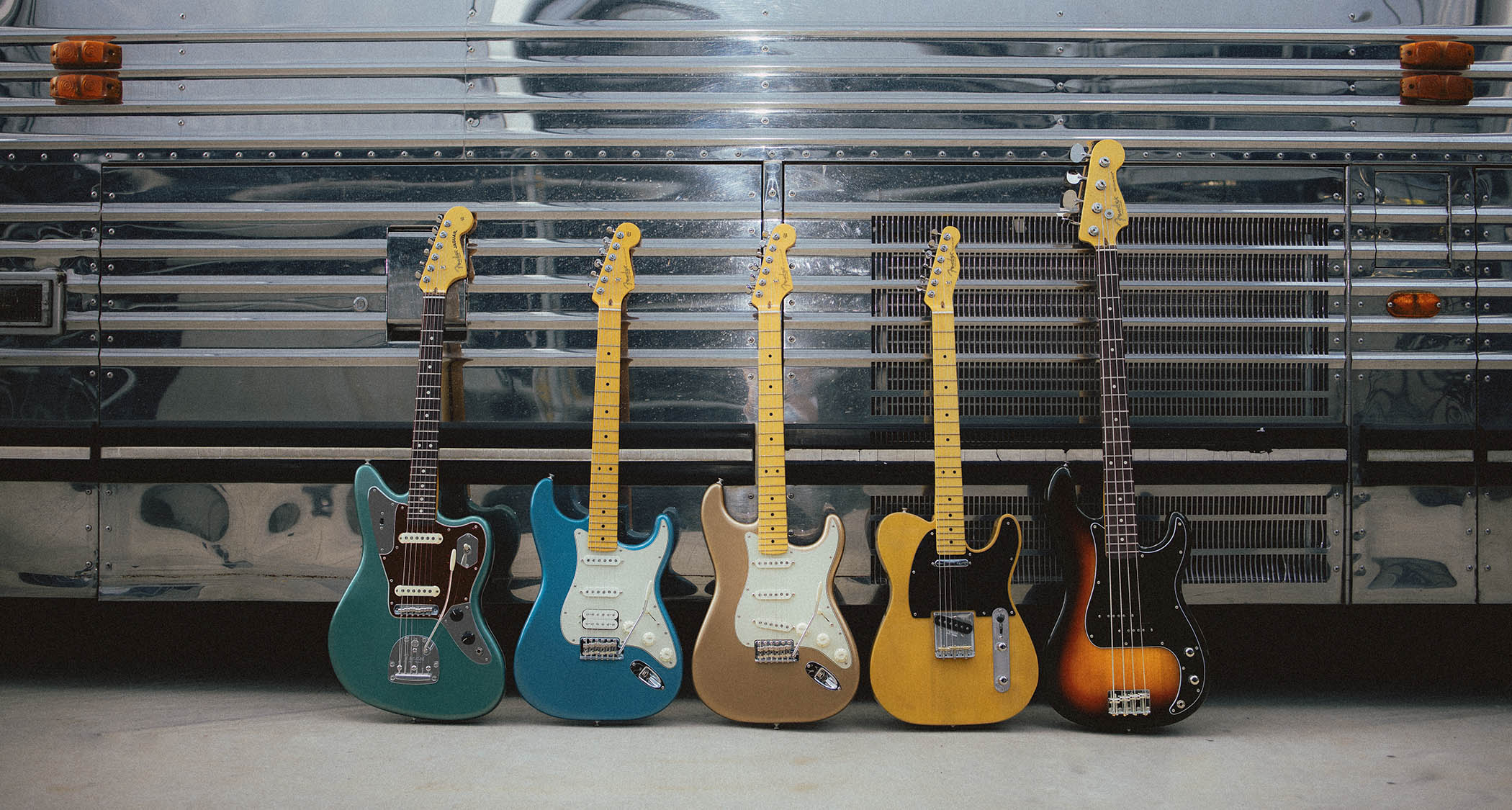Guitar World Verdict
What the Hammertone series lacks in versatility it makes up for in practicality and tone – and delivers great value for money.
Pros
- +
Compact chassis.
- +
Solid build quality.
- +
Top-mounted socketry.
- +
Inexpensive.
- +
Color co‑ordinated LEDs.
Cons
- -
Delay modulations are set up badly as shipped.
- -
Reverb has no spring emulation.
- -
Distortion and Metal pedals are too similar.
You can trust Guitar World
Fender got itself back into the pedal market in a big way a few short years ago when the company teamed up with designer Stan Cotey for what has turned into quite a large range covering all genres, sometimes twice over.
Those pedals, though, are a little on the larger size in the great pedalboard scheme of things and not necessarily affordable to everyone who’d like to add some Fender mojo to their ’board.
These things have now been addressed with the release of the nine-strong Hammertone range of pedals – described by the company as an “accessible entry to the Fender Effects family”.
These pedals are more compact and available at a price that isn’t likely to scare off any potential punters: the Overdrive, Distortion, Metal and Fuzz are all $79/£69, the remaining five cost $99/£84. All are very pedalboard-friendly with top-mounted jacks and power input so you could have several pedals completely butted up, side by side, to make the most of your available space.
With a uniform grey Hammerite finish, each pedal is distinct from the next courtesy of brightly coloured knobs and LEDs that light up in the same colour, which could be very welcome on a darkened stage. Power is via a nine-volt adaptor or a battery that’s accessed by removing the baseplate via a single screw. Time to take a listen…
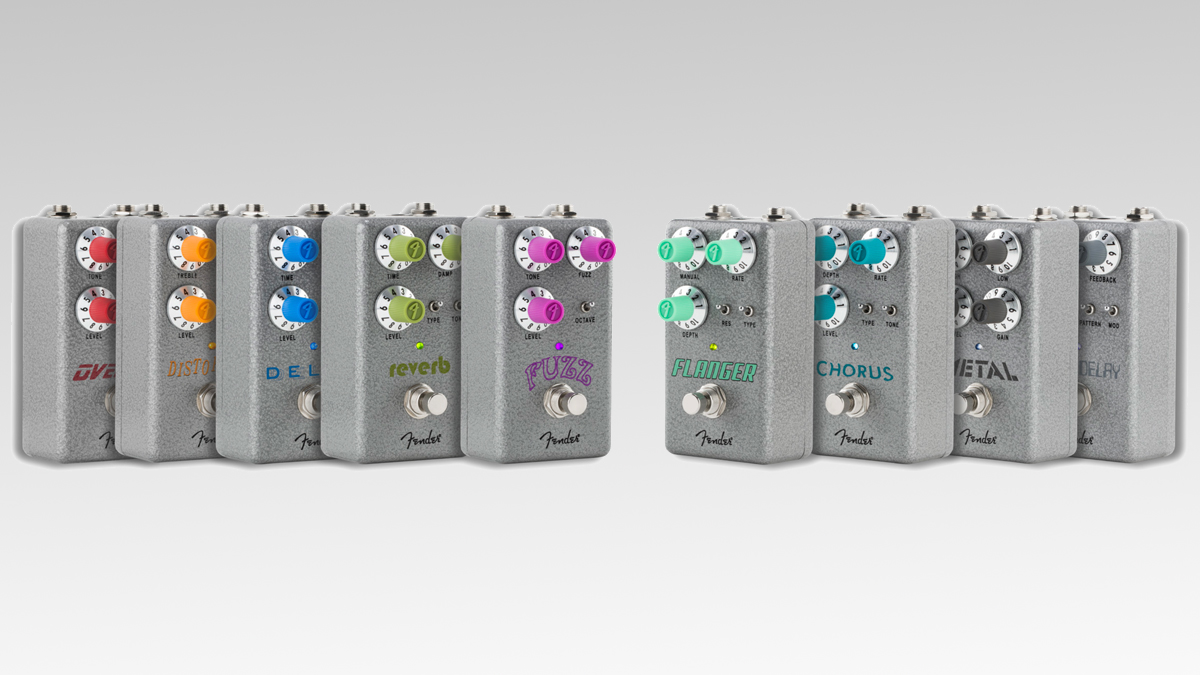
Play Dirty
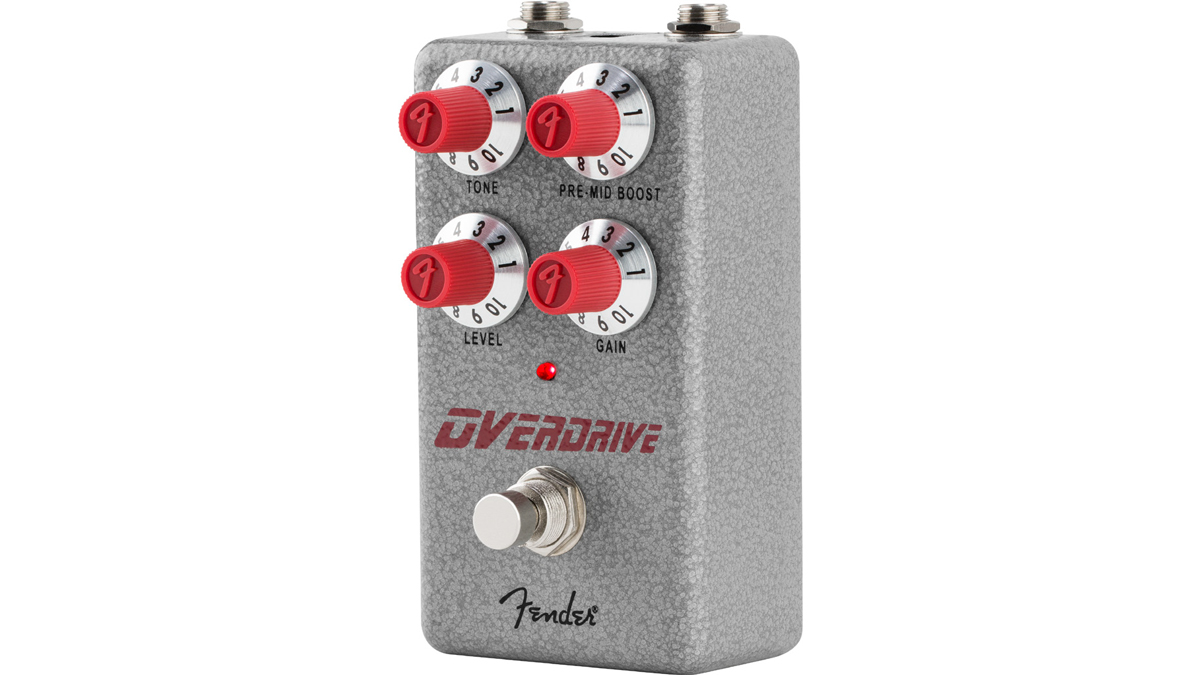
First up, the Overdrive is an original Fender design with standard Gain and Level knobs, a Tone knob and the Pre-Mid Boost knob, which places a mid-boost before the drive section. Unity gain here starts at about 7 on the Level dial, so there’s a little bit of extra for a volume boost.
The range runs from low-level raunch to full-on drive all with forward midrange and overall brightness adjusted by the Tone knob, while that Pre-Mid Boost dials in upper-mid presence for extra poke. There’s also an internal trim pot should you need to tweak the very high-end to suit your guitar amp or pickups.
All the latest guitar news, interviews, lessons, reviews, deals and more, direct to your inbox!
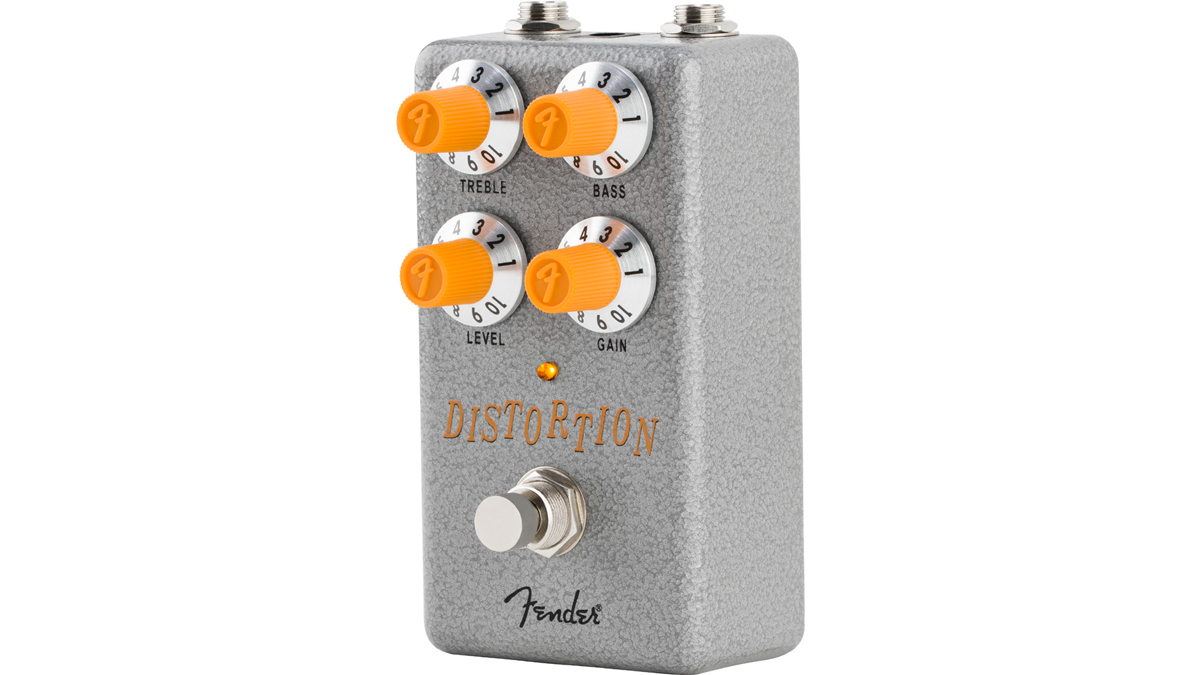
With Treble and Bass knobs to complement the Level and Gain, the Distortion pedal’s sound is much more scooped in the midrange than the Overdrive, but it does have internal trim pots to tweak midrange and dial down super-high frequencies. It’s not all about full on saturation, either (which it does rather well), as there’s some nice gritty overdrive at low-gain settings.
Now, talk about giving a dog a bad name – calling a pedal Metal immediately pigeonholes it as being for a particular musical genre, and while it’s true that you could use it to djent to your heart’s content, it could actually fulfil a useful role in other musical styles (although maybe not cocktail jazz!).
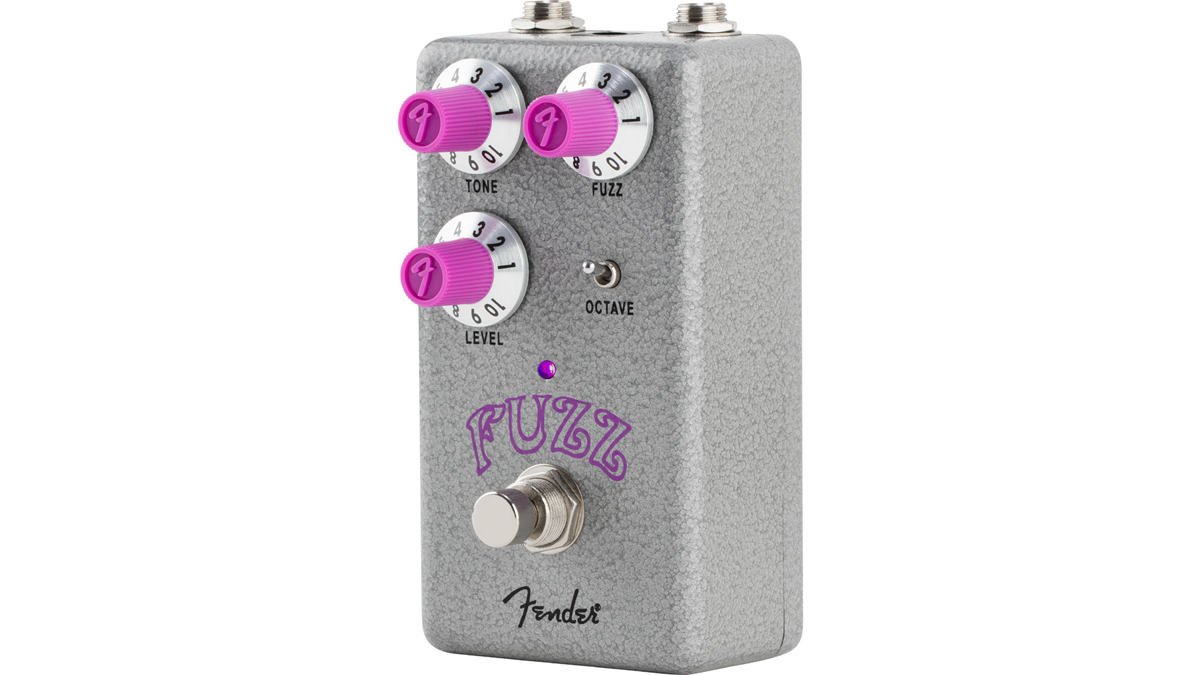
The overall vibe here is very similar to the Distortion, but there’s more gain and a touch more high-frequency content. The Treble and Bass knobs have been renamed Hi and Lo and are complemented by the same internal trim pots.
The Fuzz pedal is powered by a pair of silicon diodes and cleans up nicely with guitar volume. There’s an internal trim pot to set your high-frequency preference, but, as shipped, it’s full bodied and needs the Tone knob up beyond 7 to get a practical level of top-end presence. The switchable octave gives it an extra voice with a metallic edge and an aggression that works well for leads up the neck.

Modulation Matters
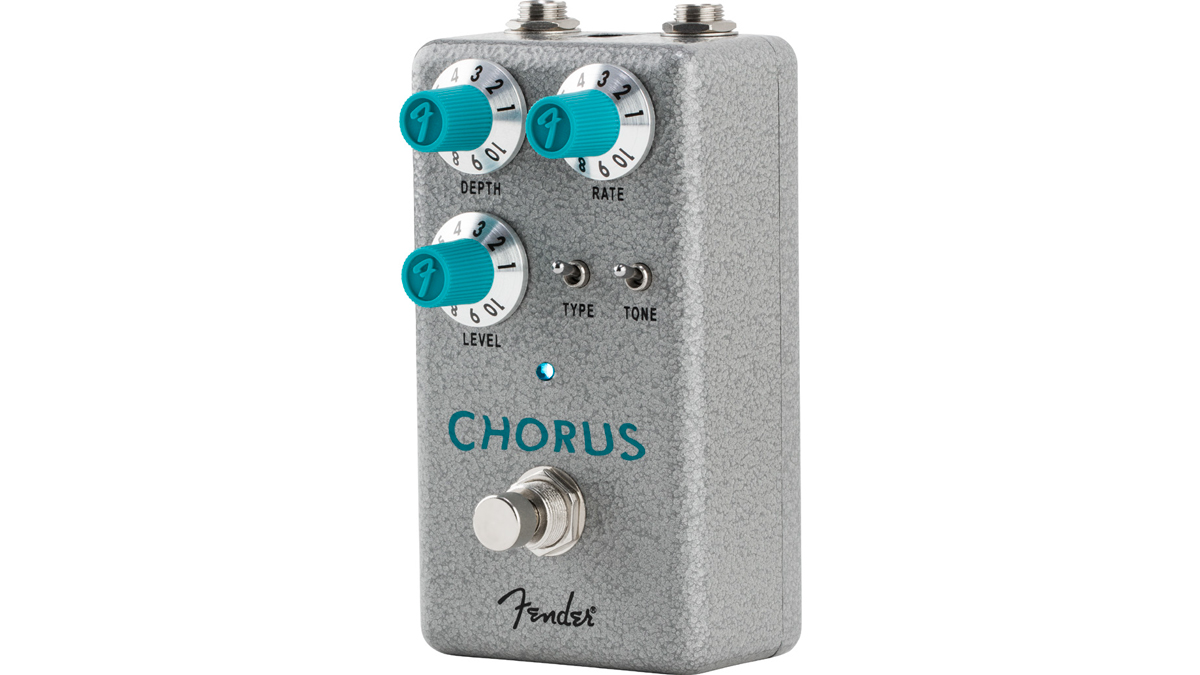
The Chorus has the expected Rate and Depth knobs, plus a Level knob that travels from totally dry to totally wet sound. You can select three different variations of chorus, and a Tone switch toggles the low-end content so there’s a wide range of variation available; it’s a far cry from the Boss CE-2 trick of simply setting the two knobs at 10 and two o’clock.
There’s plenty of wobbly seasick sounds here, if that’s your thing, but that Level knob is the key to dialling in subtlety for the more classic, typical 1980s chorus sounds.
While the chorus is workmanlike, the Flanger goes beyond the call of duty, providing an excellent range of tones including all the metallic swoosh you’ll need, faux rotary sounds and more, all dialled in via two distinct variations, three levels of resonance to let you set the intensity, and juxtaposition of the Rate, Depth and Manual knobs.
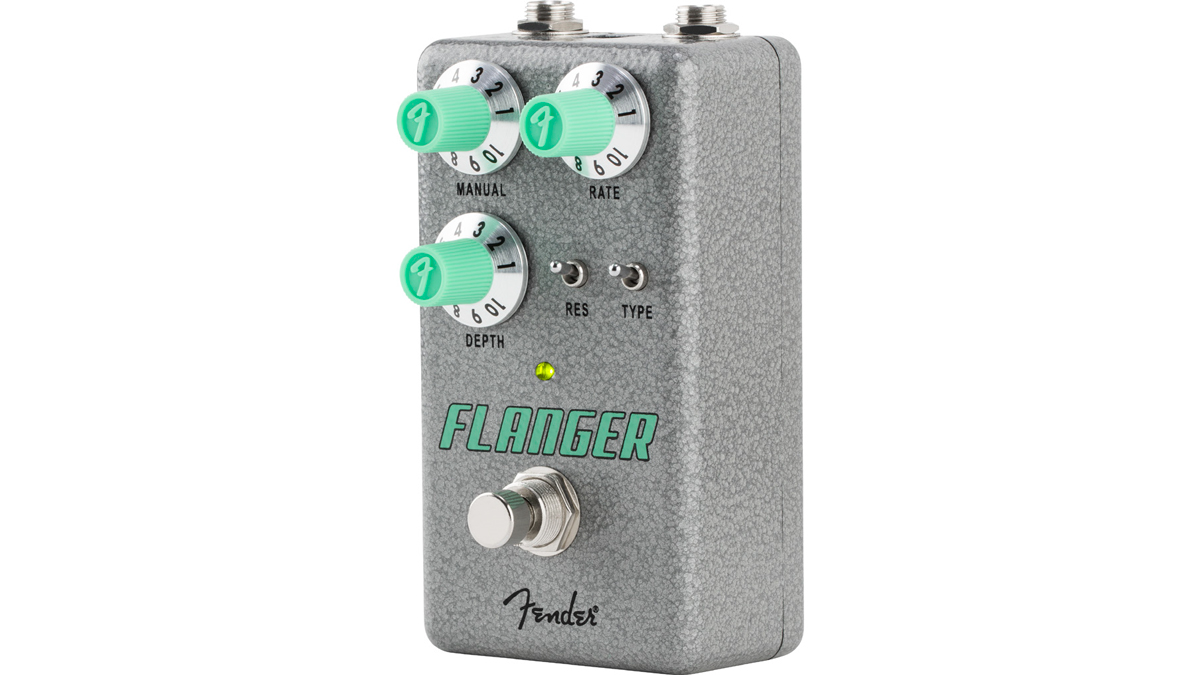
Ambience Anyone?
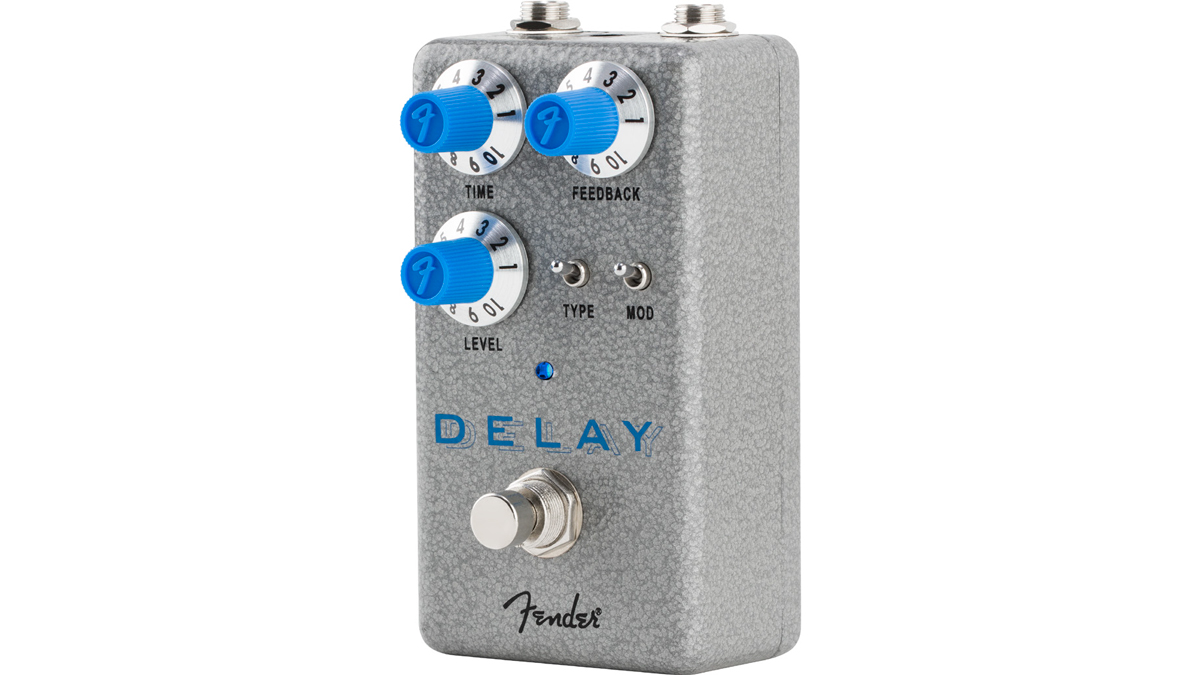
The first of the delays is the straightforward digital Delay with a generous maximum delay time of 950ms, allowing an array of musical delay applications from doubling through slapback upwards.
You can choose three options for the nature of the repeats – there’s the standard typically bright repeats that you may wish to use for rhythmic effects, plus two choices of less strident more subdued repeats that lend themselves to bedding in with your sound, not unlike a BBD or tape-based analogue delays. There’s also modulation that can be switched in.
As shipped, that is definitely OTT with quite deep pitch modulation going on, but there are internal set-and-forget trim pots for both Rate and Depth that can either make things even more extreme or dial in our preference for spacious chorus or a more subtle wobble.

The other delay pedal, Space Delay, is designed to conjure up a more vintage sound. It has the same modulation and repeats that blend naturally. The main difference is that, besides the standard delay, you have a choice of two patterned delays – each with two repeats spaced like selecting two of the heads on a three-head tape echo.
Finally, the Reverb pedal is a practical source of conventional ambience. It offers Hall, Room and Plate reverbs with adjustable Decay Time and Level (Dry/Wet mix) plus adjustments for the tonal characteristics.
The Tone switch is designed to dampen the high frequencies, making the reverb less prominent, but we preferred to use the Damping knob for its more gradual roll off of the highs, taking some of the splashiness away from the reverb and letting the tails blend in. It also features on our list to the best budget delay pedals.
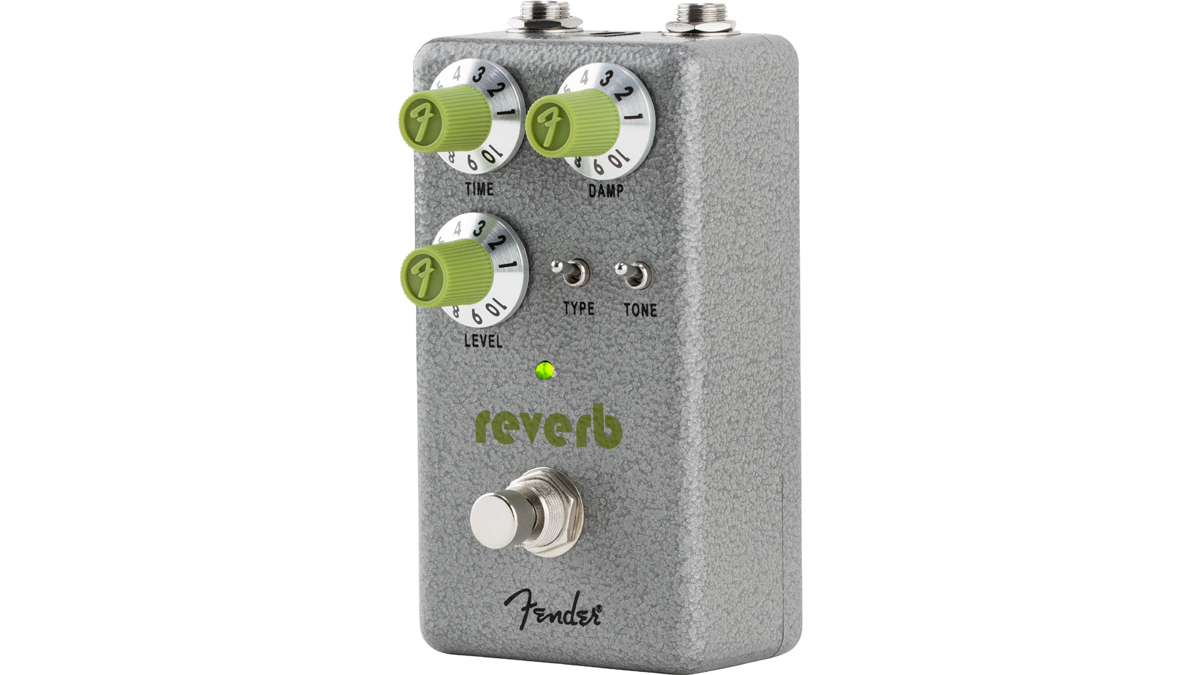
Specs
- PRICE: $79 to $99 / £69 to £84
- ORIGIN: China
- TYPE: Various
- FEATURES: True bypass
- CONTROLS: 4x knobs or 3x knobs and either 1x or 2x toggle switches, internal trim pots
- CONNECTIONS: Standard input, standard output
- POWER: All pedals will run from a 9V adaptor; a 9V battery can be used in the analogue Fuzz, Overdrive, Distortion and Metal
- DIMENSIONS: 61 (w) x 115 (d) x 56mm (h)
- CONTACT: Fender
Trevor Curwen has played guitar for several decades – he's also mimed it on the UK's Top of the Pops. Much of his working life, though, has been spent behind the mixing desk, during which time he has built up a solid collection of the guitars, amps and pedals needed to cover just about any studio session. He writes pedal reviews for Guitarist and has contributed to Total Guitar, MusicRadar and Future Music among others.
